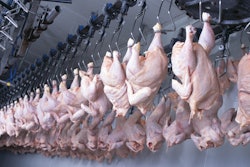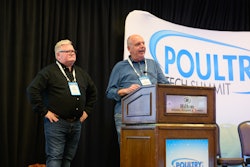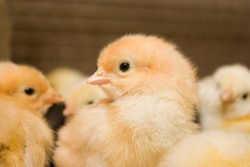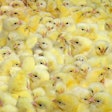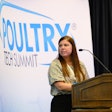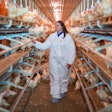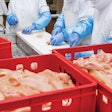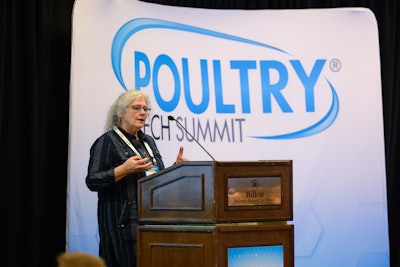
A new technology that uses two types of nanoparticles: magnetic nanoparticles (MNPs) and gold nanoparticles (GNPs) could help poultry producers better detect Salmonella in the poultry supply chain.
Salmonella detection in poultry production and processing is an ongoing challenge, partially due to the gap in monitoring the bacteria’s presence, explained Tina Conklin, Michigan Turkey Producers Cooperative Vice President, Technical Services, at the 2023 Poultry Tech Summit.
Existing detection methods such as culturing, PCR amplification or rapid antibody tests take a long time to produce results due to time consuming process of sample enrichment. However, a rapid detection technology that quickly processes Salmonella monitoring samples could help the industry improve food safety in poultry products.
How it works
The technology uses MNPs and GNPs, which can be applied throughout the poultry supply chain.
MNPs concentrate bacterial cells from large-volume samples using a magnet. GNPs are modified to react selectively towards Salmonella-specific deoxyribonucleic acid (DNA).
The MNPs form a complex with the bacteria. When the particles are gathered, they can be resuspended into a smaller volume, resulting in a higher cell concentration and a faster sample enrichment, explained Conklin.
The GNPs are mixed with oligoprobes and DNA from the sample. After being heat treated, an acid is added to trigger a color change reaction. If there is no Salmonella DNA in the sample, the solution will change to a purple shade within approximately 10 minutes. If Salmonella is detected, the solution will not change color.
If producers want to perform a more quantitative measurement, said Conklin, spectrometric measurement can be used to interpret the sample. A smartphone application has also been developed for use if a spectrometer is not accessible.
“The color change is easily interpreted using the naked eye, a smartphone application or by measuring absorbance,” she said.
According to Conklin, the technology is fast compared to current Salmonella detection methods, inexpensive and does not require large equipment. Conklin believes the technology could also be used on other meats, fruits and vegetables, and plans to test the selectivity of the technology on other poultry-associated microorganisms in the future.



